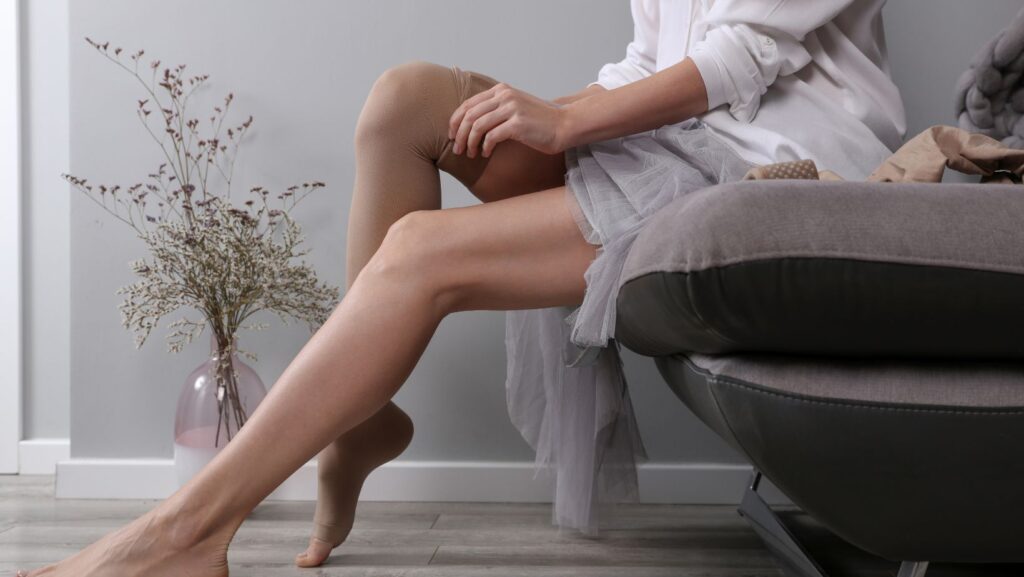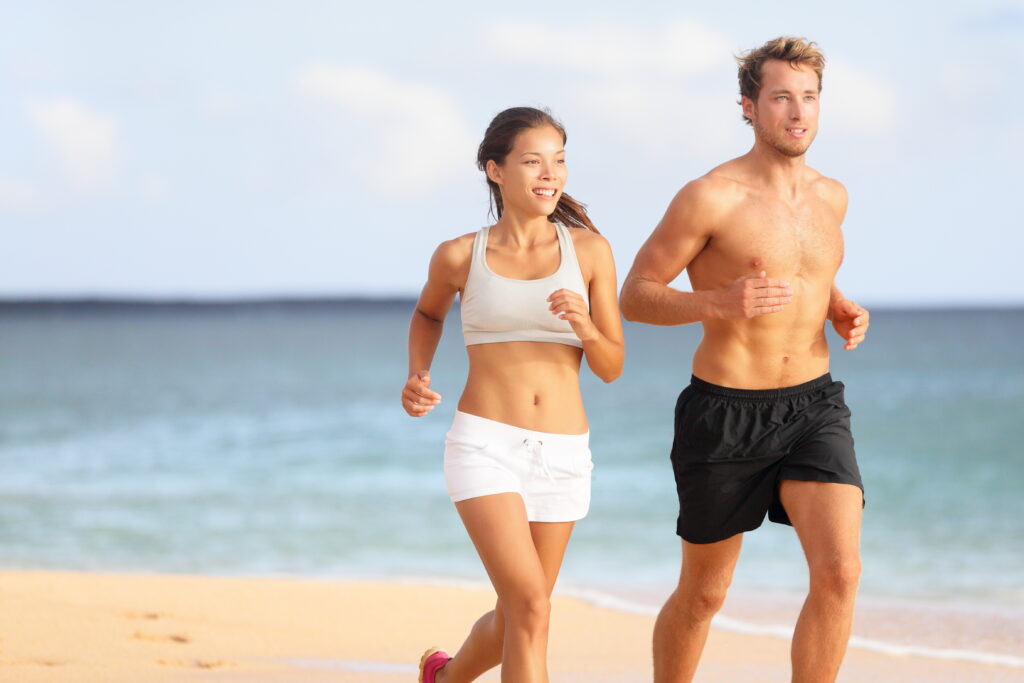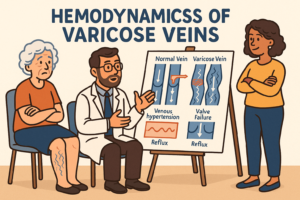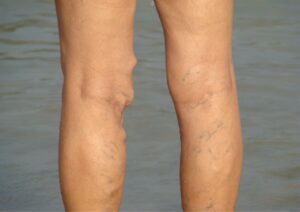Varicose veins are a common vascular condition that affects millions of people worldwide. These enlarged, swollen, and twisted veins, typically found in the legs, can be unsightly and, in some cases, cause discomfort.
While vein disease can be influenced by various factors like genetics and pregnancy, lifestyle choices such as physical activity play a crucial role in their development and management as well as for you vein health.
In this blog, we will explore the impact of exercises on venous insufficiency. We’ll delve into the dos and don’ts to regularly exercise even when dealing with bulging veins and how you can do certain exercises to effectively maintain a healthy lifestyle while managing this condition.
The Benefits of Exercise and varicose veins

First and foremost, it’s important to understand that simple exercises can have numerous positive effects on your overall vascular health, even if you suffer from vein disease.
Exercise promotes better blood circulation, strengthens the muscles, and improves cardiovascular health. This can potentially alleviate some of the varicose vein symptoms, such as leg swelling and discomfort.
Low-impact exercises, such as walking, swimming, and cycling, are highly recommended for individuals with prominent leg veins. These activities put less stress on bulgy veins than high impact exercises and help improve circulation and vein health without causing excessive strain.
Exercises to Avoid
While exercise can be beneficial, certain activities should be approached with caution if you have vein disease. High-impact exercises, such as running or jumping, can increase the pressure on the veins and exacerbate the condition.
Heavy weightlifting is also best avoided, as it can lead to pain due to straining and increased pressure on the lower extremities.
Additionally, exercises that involve prolonged standing or sitting should be performed with breaks in between to prevent blood pooling.
How Does Exercise Help Prevent Varicose Veins?
Exercises for varicose veins can play a significant role in preventing varicose veins by promoting better circulation and strengthening the muscles that support the veins. Here are several ways in which exercise helps to improve circulation and prevent varicose veins:

1. Improved Blood Circulation:
Sample exercises such as aerobic activities like walking, swimming, or cycling that focus on calf raises, increases blood flow throughout the body. When you move, the calf muscles in your legs contract and pump blood around slowly lower back, helping to push blood back towards the heart. This enhanced circulation reduces the pooling of blood in the lower extremities, which is a common cause of varicose veins.
2. Reduced Blood Pressure:
Exercise can help regulate blood pressure. High blood pressure can strain blood vessels, leading to weakened vein walls and the formation of varicose veins. By keeping blood pressure in check regularly exercise through physical activity, the risk of developing varicose veins may be reduced.
3. Strengthened Vein Walls:
Exercise can improve the elasticity and strength of blood vessel walls, including veins. Stronger vein walls are less likely to stretch and bulge, decreasing the likelihood of varicose veins.

4. Enhanced Muscle Tone:
Exercising, especially focusing on calf raises, helps build and tone muscle mass. Stronger leg muscles provide better support and more blood through to the leg veins, assisting in maintaining healthy blood flow and preventing blood from pooling.
5. Weight Management:
Being overweight or obese puts additional pressure on the veins, increasing the risk of developing a varicose vein or veins. Engaging in regular exercise as part of a healthy lifestyle can aid in weight management, reducing the strain excess weight put on the veins.
6. Prevention of Deep Vein Thrombosis (DVT):
Physical activity lowers the risk of DVT, a condition where blood clots form in the deep veins of the legs. DVT can contribute to the development of varicose veins, so preventing it through exercise is beneficial.
7. Encourages Healthy Habits:
Regular exercise often leads to adopting other healthy habits, such as maintaining a balanced diet and avoiding smoking. These lifestyle choices can also contribute to better vascular health and reduce the risk of varicose veins.
It’s essential to engage in exercise that suits your fitness level and health condition. Low-impact activities like walking, swimming, and cycling are generally the best exercises recommended for most people, including those at risk of or with varicose veins.
However, it’s advisable to consult with a healthcare professional before starting any exercise regimen, especially if you have pre-existing health conditions.
Remember that while exercise can help prevent varicose veins, it may not entirely eliminate the risk, particularly if there is a strong genetic predisposition.
A comprehensive approach regarding exercises for varicose veins, includes regular physical activity, maintaining a healthy weight, and wearing compression garments if necessary, can provide the best results in preventing varicose veins and promoting overall vascular health. Incorporating Leg Workouts
Strengthening the muscles in your legs can be particularly helpful when dealing with varicose veins. Strong leg muscles aid in better circulation to spider veins, and can provide support to the veins, reducing their appearance and discomfort.
Consider incorporating exercises like leg lifts, calf raises, and leg curls into your workout routine. These exercises focus on toning the muscles in your lower legs, without putting excessive pressure on the veins.
Walking or Running

When it comes to draft an exercise program and choosing between walking and running for varicose veins, walking is generally the more recommended option.
Both walking and running have cardiovascular benefits and can improve circulation, but walking is considered a lower-impact exercise that puts less strain on the veins, making it more suitable for individuals with varicose veins.
Here’s why walking is often preferred over running for varicose veins:
1. Low Impact:
Walking is a low-impact exercise, which means it places less stress on the joints and is exercises for varicose veins compared to running. Running can lead to repetitive impact on the feet straight legs, potentially causing discomfort for those with varicose veins.
2. Gentle on Veins:
Walking at a moderate pace encourages blood flow and helps prevent blood from pooling in the legs, which is a common concern with varicose veins. The rhythmic contraction of one leg and muscles during walking assists the venous return of blood from other leg to the heart.
3. Less Strain:
Running involves higher levels of impact than standing calf, and requires more forceful contractions of the calf muscles. This can increase pressure on the veins, potentially worsening varicose veins or causing discomfort.
4. Sustainable:
Walking is a form of exercise that can be sustained for longer periods, making it easier to incorporate into a daily routine. Consistency is key in maintaining better circulation and managing varicose veins.
5. Safe and Accessible:
Almost anyone can engage in walking, regardless of fitness level, age, or location. Doctors recommend walking, it’s a safe and accessible exercise option for most individuals.
While walking is generally recommended, it’s essential to listen to your body and consult with a healthcare professional, especially if you have severe varicose veins or other health conditions. They can provide personalised advice and recommend specific exercises tailored to your needs.
Remember that any exercise routine for varicose veins should be combined with other lifestyle changes, such as wearing compression garments, elevating the legs, and avoiding prolonged sitting or standing. These measures can collectively help manage varicose veins and promote better vascular health.
Wearing Compression Garments
For individuals with varicose veins, wearing compression stockings or garments during exercise is highly beneficial. These specially designed garments provide gentle pressure on the legs, helping to improve blood flow for improved circulation and reduce swelling. Be sure to choose the right level of compression, as too much pressure can be harmful.

Consulting with a Phlebologist
If you’re one of the many individuals dealing with varicose veins, you know how frustrating it can be to manage their symptoms. While exercise can significantly improve circulation and alleviate discomfort, it may not always be enough to completely prevent varicose veins from worsening and being responsible of venous leg ulcers.
In such cases, considering minimally invasive varicose veins treatment options can be a game-changer. These innovative procedures, such as endovenous laser ablation and sclerotherapy, have revolutionised varicose vein treatment. By utilising advanced techniques, they effectively target and close off problematic veins, redirecting the blood to healthier vessels.
These procedures are typically performed on an outpatient basis, allowing you to return to your daily routine with minimal downtime.
So, if exercise alone isn’t providing the relief you seek, exploring these non-surgical alternatives might be the key to regaining your comfort and confidence.
Always consult with a qualified healthcare professional to determine the most suitable treatment plan for your individual needs. Remember, a healthier, vein-empowered future awaits!

Conclusion
When it comes to exercise and varicose veins, incorporating regular, low-impact exercise into your lifestyle can be immensely beneficial when dealing with varicose veins. It promotes better circulation, strengthens leg muscles, and helps manage the symptoms associated with this condition.
Remember to avoid high-impact activities and consider wearing some compression socks or garments during exercise for added support.
By taking a proactive approach to your vascular health and exercising sensibly, you can lead a fulfilling and active life while managing enlarged veins effectively.
As with any health-related topic, it’s essential to seek professional advice and listen to your body. Embrace a more healthy diet and lifestyle, and let exercise become your ally in the battle against enlarged veins.









